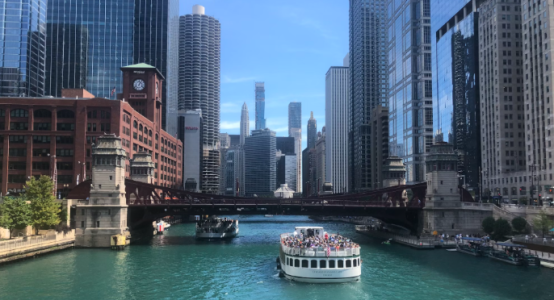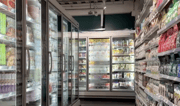Air quality crisis declared in major US city—residents told to stay indoors
- Replies 0
On an otherwise quiet Wednesday afternoon, a thick, invisible threat settled over a major city—one not seen, but dangerously inhaled.
What followed was confusion, panic, and a flood of mixed messages, as residents grappled with a rare but severe public health emergency: a toxic cloud had blanketed the city, triggering an Air Quality Index (AQI) reading of 500—the maximum level possible.
This level of pollution is considered “extremely hazardous” and is typically only reached during “massive wildfires or volcanic eruptions,” according to Google Maps’ air quality tracking system.
But in this case, there was no obvious source and no smoke-filled skyline—just a silent, invisible threat in the air.
Google and Apple users received emergency notifications warning that “everyone is even more likely to experience serious health effects.”
But other platforms, like AccuWeather and IQAir, reported that conditions were “fair” or even “good.” One user posted online a screenshot showing an AQI of 405 and asked, “How dangerous is it for me and my kid to be outside today?”
As residents scrambled for clarity, experts weighed in. Dr. Vin Gupta, a pulmonologist based in Seattle, told DailyMail.com:
“An air quality of 500 or more is typically associated with some acute event, like wildfire smoke or smoke from a burning building. You typically don't see those things unless there is a major acute event that has occurred.”
He added that those with asthma, emphysema, or other lung conditions could experience chest pain, shortness of breath, or even require hospitalization.
At 2:00 PM ET that same day, one user shared alarming metrics: carbon monoxide levels at 318 parts per billion (ppb) and PM10 levels (particulate matter) at 669 µg/m³ (micrograms per cubic meter)—well into the “Hazardous” category.
Also read: Breathe safer: How everyday air pollution could be triggering a certain skin condition!
Yet, many Chicagoans looked outside and saw nothing unusual. The city skyline remained clear, and major news outlets offered no indication of an unfolding crisis. Was this truly a health emergency—or a software glitch?
Dr. Juanita Mora, a physician affiliated with the American Lung Association, wasn’t surprised by the conflicting signals.
“We might not be able to see it in the air, but that’s why I always tell my patients to check the air quality readings,” she said.
Source: Nbcchicago / TikTok
“The particles causing air pollution are one-tenth of a diameter and they enter very easily through the nose and mouth and go straight to the lungs. Once there, they can cause asthma exacerbations and coughs in adults,” she added.
Dr. Mora recommended keeping windows and doors shut and running air purifiers indoors during high-risk days—especially for those with respiratory issues.
While the mystery around this particular event remains unsolved, it fits into a concerning trend. Chicago has consistently ranked among the worst cities in the US for particle pollution and ozone levels.
Also read: Fresh scents, hidden dangers: What experts say about indoor air pollution
The American Lung Association’s 2024 “State of the Air” report lists Chicago as the 15th worst overall for smog, a drop from 17th in prior years.
In fact, Cook County received an "F" grade for high ozone days between 2021–2023, with 52 “orange” days and six “red” days of pollution that could pose serious health risks.
“Unfortunately, as was shown in 2023, one bad fire season has the potential to offset that progress, at least temporarily, creating new challenges for air pollution control efforts and putting the health of the communities affected at increased risk,” the report warns.
Read next: Are you at risk? Daily exposure to this common hazard could spark Parkinson’s disease

Have you experienced a sudden drop in air quality where you live? How do you stay informed when the air might be dangerous—especially when the skies look clear? Share your stories and tips in the comments below, and help the GrayVine community breathe a little easier.
What followed was confusion, panic, and a flood of mixed messages, as residents grappled with a rare but severe public health emergency: a toxic cloud had blanketed the city, triggering an Air Quality Index (AQI) reading of 500—the maximum level possible.
This level of pollution is considered “extremely hazardous” and is typically only reached during “massive wildfires or volcanic eruptions,” according to Google Maps’ air quality tracking system.
But in this case, there was no obvious source and no smoke-filled skyline—just a silent, invisible threat in the air.
Google and Apple users received emergency notifications warning that “everyone is even more likely to experience serious health effects.”
But other platforms, like AccuWeather and IQAir, reported that conditions were “fair” or even “good.” One user posted online a screenshot showing an AQI of 405 and asked, “How dangerous is it for me and my kid to be outside today?”
As residents scrambled for clarity, experts weighed in. Dr. Vin Gupta, a pulmonologist based in Seattle, told DailyMail.com:
“An air quality of 500 or more is typically associated with some acute event, like wildfire smoke or smoke from a burning building. You typically don't see those things unless there is a major acute event that has occurred.”
He added that those with asthma, emphysema, or other lung conditions could experience chest pain, shortness of breath, or even require hospitalization.
At 2:00 PM ET that same day, one user shared alarming metrics: carbon monoxide levels at 318 parts per billion (ppb) and PM10 levels (particulate matter) at 669 µg/m³ (micrograms per cubic meter)—well into the “Hazardous” category.
Also read: Breathe safer: How everyday air pollution could be triggering a certain skin condition!
Yet, many Chicagoans looked outside and saw nothing unusual. The city skyline remained clear, and major news outlets offered no indication of an unfolding crisis. Was this truly a health emergency—or a software glitch?
Dr. Juanita Mora, a physician affiliated with the American Lung Association, wasn’t surprised by the conflicting signals.
“We might not be able to see it in the air, but that’s why I always tell my patients to check the air quality readings,” she said.
Source: Nbcchicago / TikTok
“The particles causing air pollution are one-tenth of a diameter and they enter very easily through the nose and mouth and go straight to the lungs. Once there, they can cause asthma exacerbations and coughs in adults,” she added.
Dr. Mora recommended keeping windows and doors shut and running air purifiers indoors during high-risk days—especially for those with respiratory issues.
While the mystery around this particular event remains unsolved, it fits into a concerning trend. Chicago has consistently ranked among the worst cities in the US for particle pollution and ozone levels.
Also read: Fresh scents, hidden dangers: What experts say about indoor air pollution
The American Lung Association’s 2024 “State of the Air” report lists Chicago as the 15th worst overall for smog, a drop from 17th in prior years.
In fact, Cook County received an "F" grade for high ozone days between 2021–2023, with 52 “orange” days and six “red” days of pollution that could pose serious health risks.
“Unfortunately, as was shown in 2023, one bad fire season has the potential to offset that progress, at least temporarily, creating new challenges for air pollution control efforts and putting the health of the communities affected at increased risk,” the report warns.
Read next: Are you at risk? Daily exposure to this common hazard could spark Parkinson’s disease
Key Takeaways
- On a recent Wednesday, Chicago’s Air Quality Index reached a max level of 500—“extremely hazardous” by national standards.
- Residents received conflicting reports via Google, Apple, and other platforms, sparking confusion over the presence of carbon monoxide and PM10 particles.
- Medical experts warned that even when the air looks clear, pollution can still trigger asthma, emphysema, and other respiratory issues.
- The American Lung Association ranks Chicago among the worst US cities for smog, with Cook County receiving an “F” for ozone pollution.







